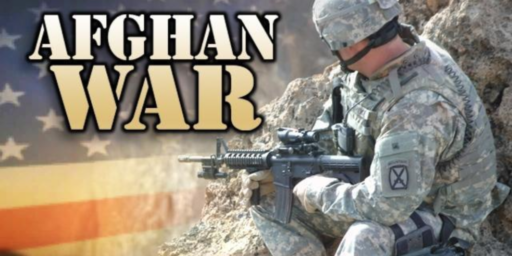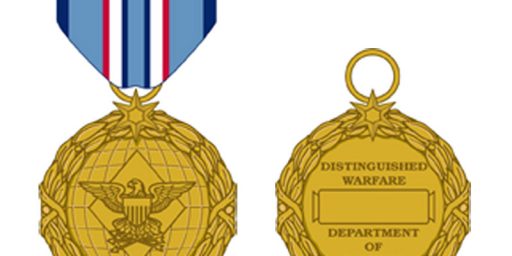TURNING THE CORNER?
Don Sensing makes a good case that yesterday’s raid which killed the Hussein boys “was the result, not the cause, of the turning of the corner in the guerrilla war in Iraq.”
As skilled as the Desert Storm-era force that I served in was, all indications are that the current one is qualitatively better. I guess a decade plus of fighting all types of wars has made for a lot of “lessons learned” that are constantly incorporated. Just the advances made in urban combat and counter-guerilla operations are staggering, let alone the improvements in technology and/or application of same. While the force is smaller and overextended, its strength goes well beyond simple size or technological superiority.
Further thoughts (1226): James Kitfield outlines in Prodigal Soldiers* noted that Desert Storm was led by men who were shaped by our failures in Vietnam. But it was also fought, with a handful of exceptions, almost entirely by troops previously untested in battle. The US military had gone 18 years without major combat operations. Since ODS, it has been one deployment after another. So, while the maneuver units in ODS had been through the National Training Center–a wonderful innovation–we’d never heard shots fired in anger. Today, almost anyone who has been in the military more than five years has seen some sort of combat. And the leaders have obviously learned a lot.
*Disclaimer: The hardcover was put out by Simon&Schuster. The paperback was put out by my company, Brassey’s, well before I started working here. It’s current sales are negligible, as is my financial stake in it.
Update (1836): In the comments below, Don mentions an extended essay on this topic from his archives. It’s worth reading.





I thought that you were just an Armor officer. These guys who took out the Hussein brothers were SF backed up by the 101st.
It appears that the overall trend is to go with smaller and smarter troops, hence the reliance on the SF, 82nd (in Afghanistan mostly) and 101st.
Like Don, I was Field Artillery (MLRS).
I think it’s true that we’re finally figuring out how to use SoF. We’ve been using the 82nd and 101st for pretty much everything in the last 20-odd years, tough. I’m not sure they’re any smarter than anyone else, just better supported with resources because they’re in the Rapid Deployment Force.
Don was with the 82nd, if I remember correctly.
But my point really is what a SF SGT. told me not too long ago. If you’re in the 82nd, you either get out (completely), go SF or Ranger or stay in the 82nd/101st somehow. There’s no other part of the Army.
I know that officers rotate and all that, but say you go Airborne/Air assault early on your career, you tend to stay within that group. Look at the leaders in Iraq and Afghanistan, both General Abazaid and General Petraeus (I’ve met him) are former 82nd guys.
He was an artillery officer who spent time with the XVIII Airborne Corps before becoming a speechwriter. Pretty interesting stuff. The bio’s here.
Yes, I was an artillery officer who had assignment in both XVIII Airborne Corps Artillery (specifically, 3-27 Field Artillery, MLRS) and Headquarters, XVIII Airborne Corps, Fort Bragg, NC.
I never served in the 82d Airborne Division. I did serve in the 2d Infantry Division, Korea, and 3d Armored Division, Germany.
Back on topic, though, James has excellent points about the progress and experience from the Gulf War until now.
I wrote something about this last January.
I would say the the armed forces have proceeded farther, in doctrine and capability, from the end of the Gulf War until now than they did from, the end of the Vietnam war until the Gulf War. In fact, I think the progress from 1991-2003 was greater than from 1945-1991.
And it won’t slow down.
—